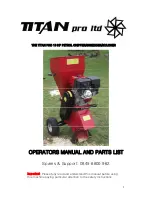
Start-up and Shut-dow n
CVHH-SVX001A-EN
87
Air Removal
If no air is in the purge tank, the refrigerant returning to the
purge condensing unit com pressor suction has a high
superheat (heat added past the point of evaporation),
because of the heat rem oved from the condensing chiller
refrigerant vapor in the purge tank. As air accum ulates in
the purge tank, it displaces the chiller refrigerant vapor and
decreases the am ount of coil surface that is exposed to the
vapor. Less heat is rem oved from the vapor, and the
available superheat at the purge condensing unit
com pressor suction consequently falls. When the purge
refrigerant com pressor suction tem perature falls far
enough to reach the pum p-out initiate value, the purge
control activates the solenoids and the pum p-out
com pressor to rem ove the accum ulated air.
As air is rem oved from the purge tank, the inside coil is
once again exposed to chiller refrigerant vapor. As m ore
chiller refrigerant vapor condenses on the coil, m ore heat
is rem oved from the vapor, and the purge refrigerant
com pressor suction tem perature rises. The purge control
cycles or stops the pum p-out process in response to the
com pressor suction tem perature.
Pump-out Operating Sequence
As the purge control system detects the presence of non-
condensables in the purge tank, it initiates a pum p-out
cycle. The pum p-out solenoid valve, the exhaust solenoid
valve, and the pum p-out com pressor cycle On and Off as
needed to rem ove the non-condensables.
Non-Condensable Pump-out Algorithm
The controller uses the non-condensable pum p-out
algorithm to determ ine w hen to initiate, control, and
term inate a pum p-out cycle to rem ove air from the purge
tank. The purge refrigerant com pressor suction
tem perature sensor serves as the feedback to this control
algorithm . The com pressor suction tem perature pum p-
out initiate and pum p-out term inate values are calculated
by the purge control and are a function of the purge liquid
tem perature.
The refrigerant used in the purge refrigeration circuit,
R-404A, is m etered into the purge tank coil by a constant-
pressure regulating expansion valve. The valve
autom atically controls the purge suction pressure at a
constant value of 351.6 kPaa (51 psia). Therefore,
refrigerant is m etered into the coil as a tw o-phase
refrigerant m ixture at a constant saturation tem perature of
approxim ately -18.9°C (-2°F).
The cold coil creates a low vapor pressure near its outside
surface, w hich draw s refrigerant from the chiller
condenser into the purge tank and to the coil surface.
When the refrigerant gets close enough to the coil surface,
it condenses into a liquid. Since liquid refrigerant requires
less volum e than it does in a gaseous form , additional
refrigerant enters the purge tank to fill the void and, in turn,
condenses. This m echanism is know n as a therm al siphon.
As the chiller refrigerant condenses, heat is transferred
into the purge coil through the latent heat of condensation.
The com pressor suction tem perature sensor m onitors this
heat transfer.
Air and other gases carried w ith the chiller refrigerant
vapor do not condense on the coil. Instead, they
accum ulate in the purge tank, effectively acting to insulate
and inhibit the flow of refrigerant to the cold coil surface.
The therm al siphon rate is reduced and, consequently, so
is the am ount of heat transfer. A corresponding reduction
Figure 50.
EarthWise purge operating limits
Ty pical operat ion
Operat ing envelope ex t r em es
A
m
b
ie
n
t
te
m
p
e
ra
tu
re
(
º
F
)
Chiller condenser sat urat ion t em perat ur e ( º F)
0
20
40
60
80
100
120
140
150
120
100
80
60
40
20
0
Pum p- out can be
inhibit ed in t his
range accor ding t o
cont r ol set t ings.
Содержание CVHH
Страница 110: ......
















































